|
Le mois d’août est celui où l’espace de quelques heures on se replonge en 1944, le temps de la commémoration de la Libération de la Bretagne par les troupes américaines pendant la Seconde Guerre mondiale. Mais l’histoire n’est pas la mémoire et pour légitime que soit ce sincère recueil, il importe de rappeler que dans la péninsule armoricaine le conflit ne s’arrête pas lors de l’été 1944 et dure en réalité beaucoup plus longtemps. On pense bien entendu aux deux poches allemandes de Lorient et Saint-Nazaire qui ne se rendent qu’en mai 1945, c’est-à-dire à l’époque ou rentrent d’Allemagne prisonniers, requis du travail forcé et déportés ayant eu la chance de survivre au système concentrationnaire nazi. Mais il est une réalité dont la mémoire collective peine à prendre conscience : si pour les Bretons et les Bretonnes la guerre dure, c’est que les troupes, y compris libératrices, restent pendant des mois après la Libération en garnison dans la région. Et cette présence n’est pas sans conséquences sur l’environnement. C’est ce que rappellent avec acuité quelques précieux documents conservés aux Archives municipales de Pontivy, dans le Morbihan. Dommages causés à un champ Tout débute dans les tous premiers jours du mois de janvier 1945 quand le maire de Pontivy, l’ancien commandant des Forces Françaises de l’Intérieur, et par ailleurs radical socialiste, Edmond Gousset, reçoit les plaintes de quelques-uns de ses administrés qui, propriétaires terriens, ont à souffrir d’importants dégâts causés à leurs champs par les troupes américaines qui y tiennent garnison. Trois terrains, tout particulièrement, semblent avoir souffert. Ensemencés de trèfle, plante nécessaire à la nourriture du bétail, ils ont été « occupés et parcourus en tous sens par des camions ». A cela doit être ajouté ce qui a été directement prélevé chez ces propriétaires. L’un d’eux affirme par exemple souffrir d’un préjudice se montant à 9 000F, somme représentant 15 000kg de paille et de foin ainsi que 250 fagots de bois, que l’on imagine employés pour chauffer les soldats américains. Il est également question des dégâts engendrés par un certain nombre de « feus de bivouac ». Mais il y a plus grave. Certains vergers semblent avoir été grandement endommagés par cette présence militaire et des pommiers coupés, ce qui suspend la récole à venir mais bien d’autres encore avant que les arbres ne puissent de nouveau produire. Un autre cultivateur, enfin, craint de ne plus pouvoir travailler son champ tant celui-ci est jonché… de grenades. Une situation normale Rappelons bien que la réalité historique décrite par ses archives renvoie à une double permanence anthropologique de l’homme en guerre : non seulement l’activité militaire créé des dégâts, et notamment au sein du monde agricole, mais la tentation est forte pour ces paysans de réaliser un substantiel profit sous couvert d’indemnisations. Cette réalité n’est donc ni propre aux Américains ni même à la Seconde Guerre mondiale. Pour s’en convaincre, il suffit d’ailleurs de se reporter à l’intitulé de la liasse 2 H 7 des Archives municipales de Pontivy, celle-là même où sont conservés les documents qui nous intéressent ici : « Dégâts causés par les troupes 1796-1980 ». Autrement dit, c’est là une réalité observable de tous temps et le phénomène est par exemple bien documenté pour les grandes manœuvres auxquelles l’armée française des années 1880-1914 s’astreint périodiquement. C’est un fait : pour les civils, l’activité militaire est source de nuisances, qu’il s’agisse de manœuvres d’entrainement ou de l’accueil de Libérateurs. Toutefois, dans le cas présent, il n’est sans doute pas impossible de soupçonner de la part des paysans morbihannais une sorte d’effet d’opportunité basé sur l’image d’opulence et de richesse généralement associée aux Américains. Là n’est du reste pas un phénomène propre à la Seconde Guerre mondiale et nous avons même, au contraire, été amenés à envisager en d’autres colonnes la présence américaine en Bretagne au cours de la période 1917-1919 sous la forme d’un « âge d’or » tant le Doughboy est associé, dans les représentations mentales ayant alors cours, à un individu aux moyens financiers quasiment illimités. Au début de l’année 1945, l’évaluation des dégâts est d’autant plus délicate que les troupes sont encore sur place, ce qui bien entendu complique considérablement la tâche et permet de pratiquer assez librement une certaine inflation. Malheureusement, l’historien n’est pas en mesure de déterminer quel est le « juste prix » des fourrages et bois prélevés sur les champs de ces propriétaires pontiviens. Tel propriétaire, par exemple, se plaint au début du mois de janvier 1945 d’un « préjudice considérable pour l’avenir de la bonne marche de [s]on exploitation ». Pour autant, force est de constater que la documentation ne permet pas d’en donner une idée chiffrée. Tout juste pouvons-nous prendre acte de l’écart entre la somme réclamée par l’un des plaignants, 9 000 francs, et ce que les « officiers commandant les troupes américaines » proposent à titre d’indemnisation : 3 000 francs. Un aspect oublié de la Seconde Guerre Ces quelques documents conservés par les Archives municipales de Pontivy nous dévoilent un aspect oublié de la Seconde Guerre mondiale et invitent à une histoire environnementale de la présence américaine dans la péninsule armoricaine sur la période 1944-1945. Pour le dire autrement, il s’agit de resituer ces soldats étatsuniens dans l’espace et dans leurs interactions avec la nature. Mais le propos ne peut se limiter à ce seul constat. Le coût, y compris sur le plan écologique, apparaît en définitive relativement peu élevé pour qui veut bien se rappeler la tyrannie exercée par le IIIe Reich et l’évaluation des dégâts semble difficilement dissociable de la nationalité des militaires désignés comme responsables. Non seulement ils sont vainqueurs, et donc en grande position de force, mais Américains, ce qui renvoie à un imaginaire d’opulence. Et c’est sans doute là, en définitive, que ces archives deviennent réellement intéressantes. Elles rappellent en effet que la Libération est une période sans doute moins harmonieuse qu’on veut bien le dire, y compris en ce qui concerne les rapports de la population civile aux troupes américaines. Ainsi, l’un des plus vifs reproches qui est formulé à leur égard est qu’ils s’installent sans aucune demande préalable, plaçant devant le fait accompli la population. Enfin, ces archives mettent en lumière les grandes difficultés financières auxquelles sont confrontés les Bretons et les Bretonnes. Car si les dommages sur les champs de trèfles sont aussi préoccupants, c’est qu’ils hypothèquent la nourriture du bétail et viennent ajouter aux difficultés d’un secteur agricole déjà considérablement éprouvé par le conflit. D’où la tentation de tirer profit du Libérateur américain. par Erwan Le GallDocteur en histoire contemporaine, chercheur associé au Centre de recherche bretonne et celtique (CRBC EA - 4451 / UMS 3554) et enseignant à l'Université catholique de l'Ouest-Bretagne-Sud, Erwan Le Gall est chargé de la vulgarisation de la matière culturelle de Bretagne à Bretagne Culture Diversité.
0 Comments
NY TIMES, February 1967 - They had been on their feet all day, waiting on table or working in kitchens. They were on their feet all night, dancing, at the 17th annual Brittany Ball, held last Saturday at Manhattan Center. And a lot of them were dancing again on Sunday, above La Grillade restaurant. Almost all French restaurants were represented at the ball, because almost all French restaurants have waiters or bus boys or cooks who hail from Brittany. And many of them come from one small town and its farming environs, the town of Gourin. When they first came here in the early part to this century, the Bretons worked, played and stayed so tightly together in New York that few of them learned to speak English. Nevertheless, they were promptly dubbed The Americans when they returned home. Today, most of them seem to pick up English quite fast, perhaps because not all of them still live together in the Forties around Ninth Avenue. Many have moved to Astoria, Queens, and a few live on the East Side. The Bretons, who are a Celtic people (they were driven out of England by the Anglo-Saxons about 14 centuries ago), have no great culinary tradition. “But they have a natural feel for cooking,” said Mrs. Robert Low, wife of the councilman, who has had a succession of Breton housekeepers. Mrs. Low, who said that a Breton never left without finding a replacement, has visited Bretons who have returned to France. They seem to have the capacity of being equally happy in either environment, she said. But not all have been happy back in that bleak northwest corner of France. And the Brittany Association estimates that only about halt even try to return. According to the newspaper France-Amerique, there are about 12,000 Bretons in New York City (more than one-third to the French population here). Three-quarters of the French waiters here are Bretons, the newspaper estimates. Children Stayed in France The original pattern seemed to be for the husband to go to work in a restaurant and the wife to go into domestic service. The children stayed in France until the parents either sent for them or returned home with enough money to start a small business. Today, most Bretons who come over are single and, even when they marry and have a family, they can afford to keep the children here and live on what the husband makes. Consequently the children grow up in this country and, even though they may go to French schools, they prefer to speak English, the language of television. “People take more interest in a country through their children than they would otherwise," said Jean Bodenes, owner of Le Cheval Blanc (145 East 45th Street). Mr. Bodenes, who has no children and has been here for 37 years, would like to retire to Brittany. Mr. Bodenes traces the start of the Breton restaurant monopoly to the closing of the Michelin Tire Corporation's factory in Milltown, N. J. during the Depression. A lot of Bretons had been employed there and most of them came to New York where, because they had no particular skills and little English, they went to work as dishwashers or bus boys at French restaurants. One of the leading figures in the Breton community is the ample one of Mrs. Anna Daniel, who came here in 1914 and might he considered typical of early immigrants. She went to work for a lawyer on Park Avenue (she is still in service there), married a chef who worked in a private club until his death, and had two daughters whom she sent back to France to be raised by her sister before bringing them back here. Although Mrs. Daniel owns a house back in Gourin, she does not plan to live there. “This is my home,” she said, placing her hands over heart. Mrs. Daniel used to bring a lot of girls over to work for friends of her employers. “How many times have I gone to Ellis Island to get them,” she reminisced. I would vouch for them and then get them fixed up properly so they could work in homes. Now all that has stopped." Mrs. Daniel was referring to the new immigration laws, implemented last year, under which it is necessary to have a special skill or a very close relative in order to get into this country. As a result, few Bretons are now able to come here. Restaurant owners are already worried about the situation. “In a few years it will be very difficult,” said Edouard Duthu, one of the owners of Le Marmiton ( 216 East 49th Street). Mr. Duthu is not from Brittany, but most of his employees are. “And a French restaurant without French help is not much appreciated." he added. Like most people from other regions of France, Mr. Duthu looks upon the Bretons with exasperation and admiration. “They are individuals, stubborn," he said. “But if you treat them right they work! very hard. And believe me it is no picnic to carry dishes all day. The Bretons work hard because they are used to hard work and because most of them hope some day to open a restaurant of their own. Gilbert Le Dour, a waiter at La Croisette (1063 First Avenue, at 58th Street), is no exception. On Saturday, at the ball, Mr. Le Dour was wearing sideburns and native costume and doing folk dances. On Sunday he was wearing sideburns and casual clothes and doing spine-dislocating acrobatics at La Grillade, where dancing to an Italian four-piece band costs $2 on weekend evenings. Mr. Le Dour, who has been here four years, says he likes it better here when he is here and there when he is there. “I'm mixed up,” he admitted, and added that in three months he plans to take a vacation in Gourin and marry a local girl. Grateful for Opportunities “In France I wouldn't be able to open a restaurant like this, even if I worked my whole life," said Albert Deniel, who opened La Grillade ( 845 Eighth Avenue, at 51st Street) in August. Mr. Deniel came here in 1957 and started work as a bus boy at La Potiniere (60 West 55th Street). A year later he married Lisette, who was the checkroom girl at the restaurant. They have two children who attend l'Ecole Francaise, but prefer to speak English. "We try to keep together in New York by having four or five gatherings a year.” said Roger Gourin, president of the 300-member Brittany Association. “All these nationalistic things are beginning to die out," said Deputy Commissioner of Public Events J. J. O'Brien who represented the Mayor at the ball. “But I think the Bretons are probably holding together better than any of the others.” 🌃 Bretons of NY T-shirt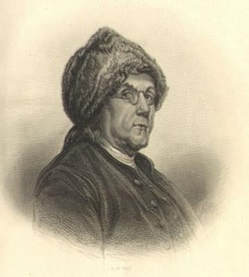 On October 26, 1776, exactly one month to the day after being named an agent of a diplomatic commission by the Continental Congress, Benjamin Franklin sets sail from Philadelphia for France, with which he was to negotiate and secure a formal alliance and treaty. Franklin arrived on December 4th in the Breton port of St Goustan, Auray. On arrival Franklin saw a group of peasants and approached them. They had long hair, black hats with wide brim, short jackets, bloomers, and tight gaiters. When speaking to them they did not understand his English or French (which was basic at the time). Franklin later said that he had recognized them as Bretons, older than the English. Franklin then travelled to Vannes only reaching Nantes on December 7th where he was greeted by an enthusiastic crowd. In France, the accomplished Franklin was feted throughout scientific and literary circles and he quickly became a fixture in high society. While his personal achievements were celebrated, Franklin's diplomatic success in France was slow in coming. Although it had been secretly aiding the Patriot cause since the outbreak of the American Revolution, France felt it could not openly declare a formal allegiance with the United States until they were assured of an American victory over the British. For the next year, Franklin made friends with influential officials throughout France, while continuing to push for a formal alliance. France continued to secretly support the Patriot cause with shipments of war supplies, but it was not until the American victory over the British at the Battle of Saratoga in October 1777 that France felt an American victory in the war was possible. A few short months after the Battle of Saratoga, representatives of the United States and France, including Benjamin Franklin, officially declared an alliance by signing the Treaty of Amity and Commerce and the Treaty of Alliance on February 6, 1778. The French aid that these agreements guaranteed was crucial to the eventual American victory over the British in the War for Independence. To celebrate Fête de la Bretagne in California (Brittany Week), non-profit organization Breizh Amerika will be hosting a series of events from May 18th-27th to celebrate the culture, food, music, film, and history of the region of Brittany, France. A special exposition with panels, maps, photographs and brochures will be held at the Alliance Française San Francisco to highlight the authentic beauty and uniqueness of Brittany while also focusing on the presence of Bretons in California as early as the 19th century. Three panels retracing the history of Bretons in western United States, normally exhibited by Bretagne Transamerica at the Chateau de Tronjoly in Gourin, Brittany, will be on loan for the SF exposition. The expo will culminate with a lecture on the evening of May 24th on the adventures of three notable Breton-Californians. Breizh Amerika : From Brittany to California -- Breton adventures in California
Exposition from May 14th to June 2nd at Alliance Française San Francisco (1345 Bush St, San Francisco, CA 94109) Exhibition curator: Marion Le Guellec / Photo Exhibit: Madeleine Adkins / Panels : Bretagne Transamerica Lecture on May 24th, 6:45pm at Alliance Française SF Gilles Lorand and Claudine Chalmers will share the stories of some Bretons who entered San Francisco and California history. Gilles Lorand Breton, founder and tour Guide at “San Francisco by Gilles” Gilles Lorand will chronicle the story of Joseph-Yves Lemantour (a.k.a “Limantour”), a native from Lorient (Brittany) who owned half of the city of San Francisco and the participation of Breton sailors during the Californian Gold Rush. Claudine Chalmers, Ph.D. Historian, author and French Chevalier of the Order of Arts & Letters Claudine Chalmers will chronicle the lives of two Breton pioneers who left an important mark on California : Ernest Narjot, an artist from Saint-Malo, and Jules Simoneau, a native from Nantes, tavern-keeper who helped Jules Tavernier (painter) found an art colony in the Monterey peninsula, and was best known for his friendship with Robert Louis Stevenson (novelist). 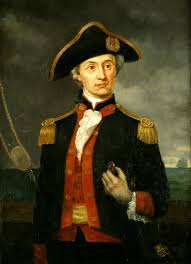 John Paul Jones John Paul Jones Le 14 février 1778, l’escadre de l’amiral de la Motte-Picquet est au mouillage en baie de Quiberon, Bretagne. La marine royale française veille alors sur sa flotte de pêche et de commerce face à la menace anglaise. Un navire se met en route après avoir appareillé du mouillage. C’est une corvette de 18 canons qui arbore à sa poupe un pavillon aux bandes rouge et blanche, orné d’étoiles sur fond bleu. Il s’agit de la bannière étoilée, le Stars and Stripes, que la jeune nation américaine a adoptée le 14 juin 1777. L’USS Ranger, commandé par le capitaine de vaisseau John Paul Jones, envoie une salve de 13 coups de canon (du nombre d’états américains) pour saluer l’escadre française. La Motte-Picquet, à bord de la Robuste répond par 9 coups (chiffre réglementaire à l’époque pour une république indépendante) établissant de facto la reconnaissance des Etats-Unis d’Amérique par le royaume de France. C’est la première fois que la Star-Spangled Banner a droit aux honneurs militaires. Que ce soit pour conjurer le sort ou montrer ses intentions pacifiques en déchargeant de manière ostensible ses armes, le salut au canon est une tradition ancienne. Puisqu’il représente sa nation dans un milieu hostile, le navire militaire constitue un vecteur de diplomatie incontestable, donnant ainsi un poids particulier aux rencontres en mer ou aux escales dans les ports étrangers. John Paul Jones s’empresse ainsi d’écrire au Congrès américain pour rendre compte de ce salut et de son implication pour la politique étrangère de la France. La bienveillance de la France à l’égard de la jeune République s’exprime notamment par le soutien apporté au capitaine Paul Jones dans ses équipées contre les Anglais. Figure fondatrice de l’US Navy, Paul Jones était un amoureux de la France. Il mourut d’ailleurs à Paris et fût enterré au cimetière des protestants étrangers de la Grange-aux-Belles, avant d’être rapatrié plus d’un siècle plus tard à l’US Naval Academy d’Annapolis, où il repose toujours. « Sammies » témoignage unique du débarquement et de la vie des troupes américaines à Brest9/23/2017 La Cinémathèque de Bretagne a lancé une campagne de financement participatif sur la plateforme bretonne Kengo. Cette démarche vise à contribuer au financement de l'édition d'un double DVD. Ce qui permettra ainsi une plus grande accessibilité aux exceptionnelles images d'archives américaines tournées à Brest en 1917, témoignage unique du débarquement et de la vie des troupes américaines à Brest entre 1917 et 1919. À l’heure où Brest commémore l’arrivée des troupes américaines en 1917, la Cinémathèque de Bretagne a souhaité partager un trésor : les archives filmées provenant des Archives Nationales américaines (NARA à Washington), images du débarquement et de la vie quotidienne des soldats américains à Brest en 1917 et 1918 filmées par les opérateurs de l’armée. À travers ces images, c’est toute une époque qui revit : débarquement de milliers de soldats sur le port, aménagement de la ville et de la vie quotidienne, choc des cultures… Imaginez, près de 800 000 Sammies débarquant au port de Brest avec, dans leurs bagages, des savoir-faire techniques encore méconnus en Europe, une musique au rythme novateur (le jazz), un sport jusqu’ici pratiqué uniquement outre-Atlantique (le basket) ! Imaginez, la rencontre des Sammies et des Brestois(es) ! Imaginez, une ville bretonne devenue américaine pendant plus d'un an… Bref, un tournant majeur dans l’histoire de la ville dont témoignent les images étonnantes et émouvantes que la Cinémathèque de Bretagne souhaite faire (re)découvrir aujourd’hui, grâce à une nouvelle numérisation haute définition. Expo photo, ciné-concert, projection, conférences : plusieurs évènements seront proposés de septembre à décembre 2017, à Brest mais aussi à Nantes. 14 février 1778 : Reconnaissance du drapeau américain Baptême breton du drapeau américain (Quiberon – Port Haliguen). Le royaume de France ayant signé un traité d’alliance avec les Etats-Unis d’Amérique le 6 février 1778, le lieutenant John Paul Jones de la Continental Navy quitte Nantes (où il attendait la nouvelle de cette signature) à bord du Ranger et vient prendre livraison des navires que la France cède à ses nouveaux alliés en baie de Quiberon. C’est à cette occasion qu’est salué pour la première fois de l’Histoire le drapeau américain. En effet, Jones en arrivant en vue de la flotte du comte de la Motte-Piquet salue, comme c’est l’usage, d'une salve d'honneur le pavillon du Roi. La Motte-Piquet répond baptisant ainsi le drapeau américain. |
Categories
All
Blog Archives
June 2024
Breizh Amerikais an organization established to create, facilitate, promote, and sponsor wide-ranging innovative and collaborative cultural and economic projects that strengthen and foster relations and cooperation between the United States of America and the region of Brittany, France. |
Copyright 2014 - All rights reserved - Breizh Amerika - Privacy Policy
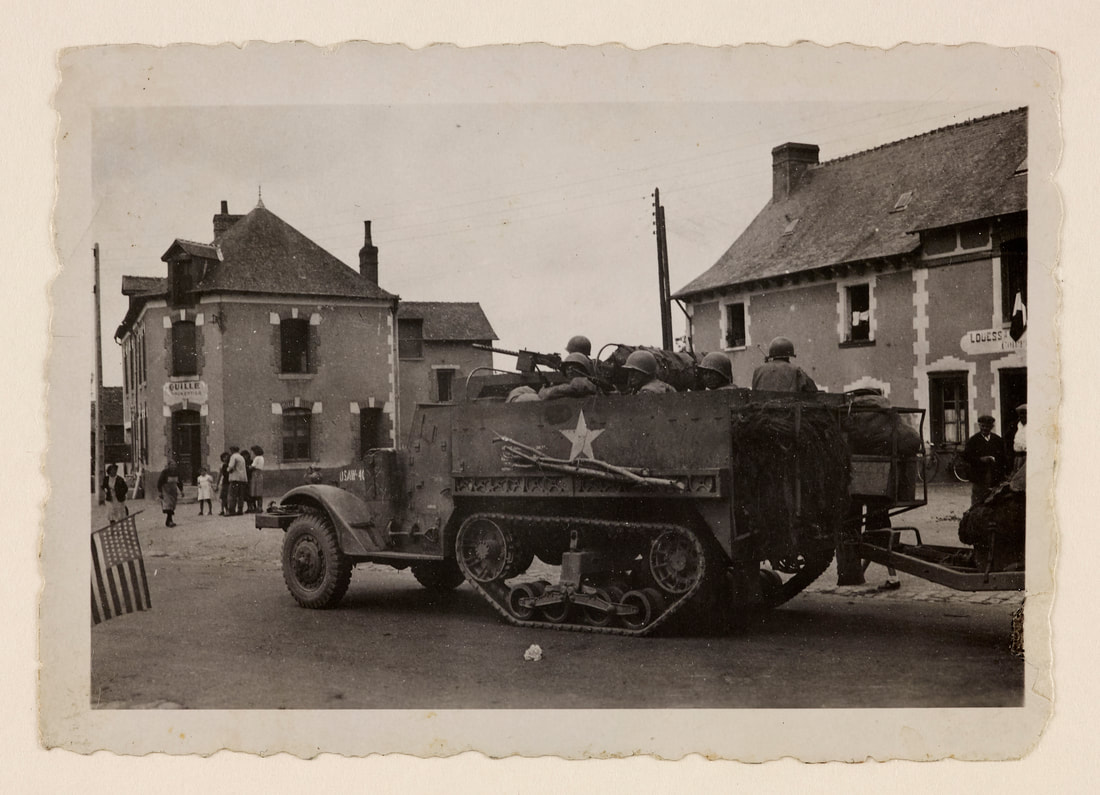
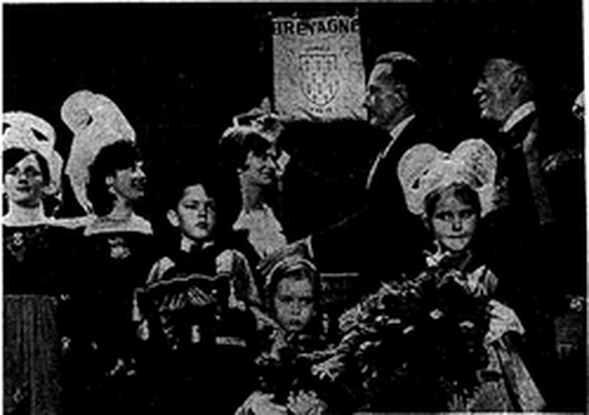
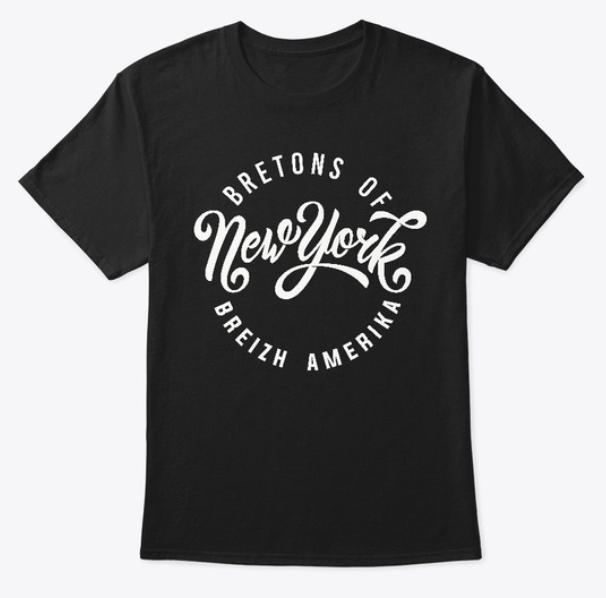
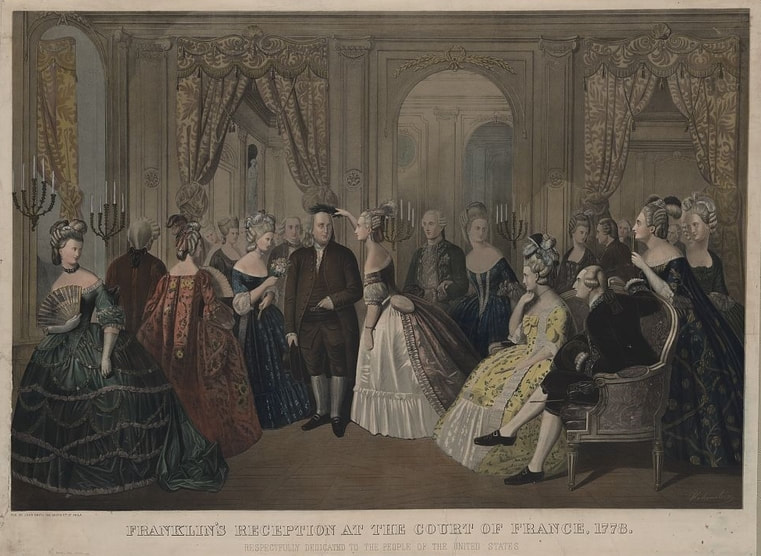
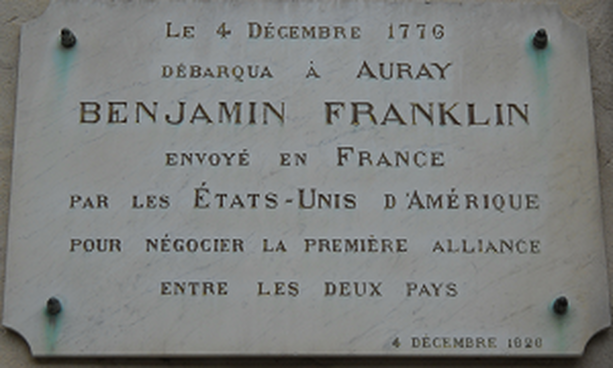
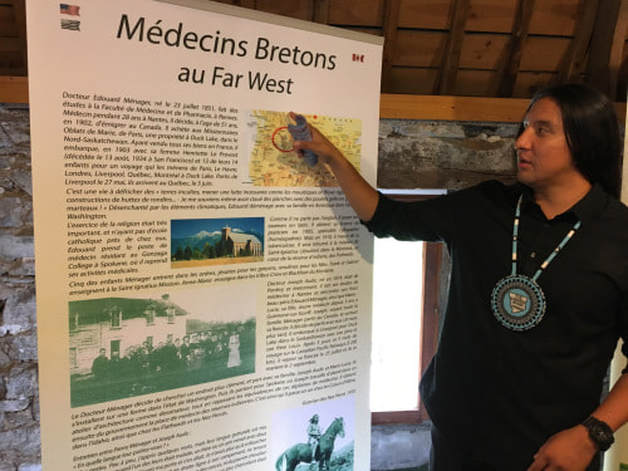
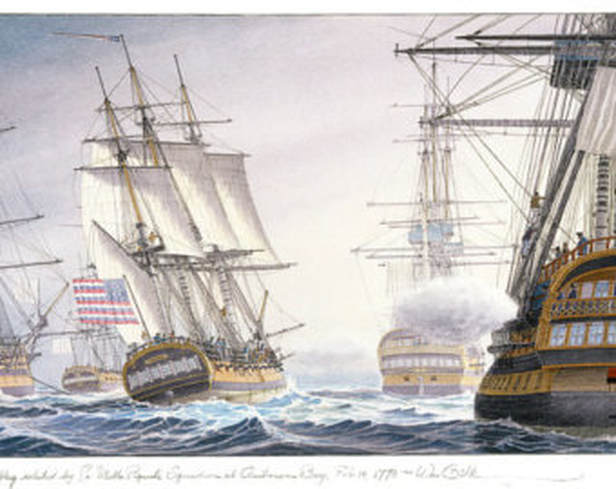
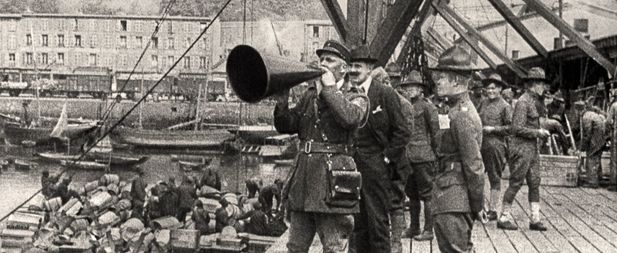

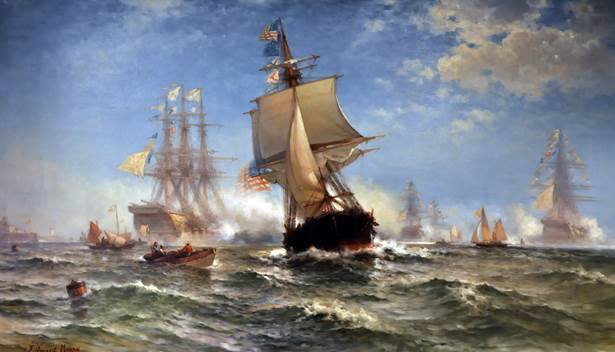
 RSS Feed
RSS Feed

